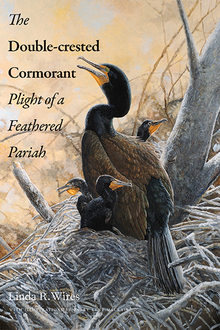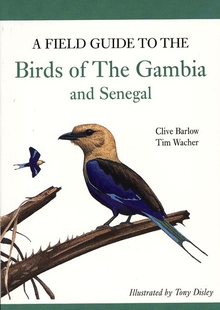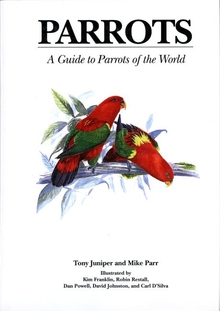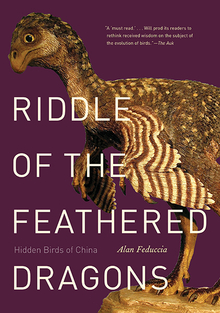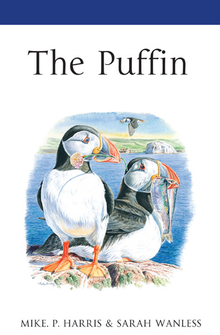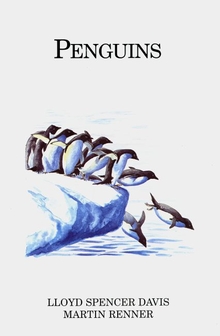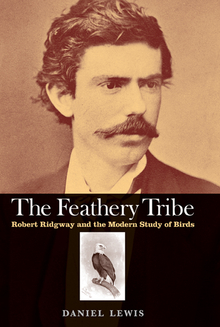The Double-Crested Cormorant
WARNING
You are viewing an older version of the Yalebooks website. Please visit out new website with more updated information and a better user experience: https://www.yalebooks.com
Plight of a Feathered Pariah
Linda R. Wires; With Original Illustrations by Barry Kent MacKay
The tragic history of the cormorant’s relations with humans and the implications for today’s wildlife management policy
The double-crested cormorant, found only in North America, is an iridescent black waterbird superbly adapted to catch fish. It belongs to a family of birds vilified since biblical times and persecuted around the world. Thus it was perhaps to be expected that the first European settlers in North America quickly deemed the double-crested cormorant a competitor for fishing stock and undertook a relentless drive to destroy the birds. This enormously important book explores the roots of human-cormorant conflicts, dispels myths about the birds, and offers the first comprehensive assessment of the policies that have been developed to manage the double-crested cormorant in the twenty-first century.
Conservation biologist Linda Wires provides a unique synthesis of the cultural, historical, scientific, and political elements of the cormorant’s story. She discusses the amazing late-twentieth-century population recovery, aided by protection policies and environment conservation, but also the subsequent U.S. federal policies under which hundreds of thousands of the birds have been killed. In a critique of the science, management, and ethics underlying the double-crested cormorant’s treatment today, Wires exposes “management” as a euphemism for persecution and shows that the current strategies of aggressive predator control are outdated and unsupported by science.
The double-crested cormorant, found only in North America, is an iridescent black waterbird superbly adapted to catch fish. It belongs to a family of birds vilified since biblical times and persecuted around the world. Thus it was perhaps to be expected that the first European settlers in North America quickly deemed the double-crested cormorant a competitor for fishing stock and undertook a relentless drive to destroy the birds. This enormously important book explores the roots of human-cormorant conflicts, dispels myths about the birds, and offers the first comprehensive assessment of the policies that have been developed to manage the double-crested cormorant in the twenty-first century.
Conservation biologist Linda Wires provides a unique synthesis of the cultural, historical, scientific, and political elements of the cormorant’s story. She discusses the amazing late-twentieth-century population recovery, aided by protection policies and environment conservation, but also the subsequent U.S. federal policies under which hundreds of thousands of the birds have been killed. In a critique of the science, management, and ethics underlying the double-crested cormorant’s treatment today, Wires exposes “management” as a euphemism for persecution and shows that the current strategies of aggressive predator control are outdated and unsupported by science.
Linda Wires is a conservation biologist who focuses on monitoring and issues involving waterbirds. She lives in Minneapolis. Barry Kent MacKay is a bird artist, illustrator, and activist who lives in Markham, Ontario, Canada.
'Combining natural history, policy analysis and rhapsodic appreciation, [Wires has] produced a book in which context matters for animals as much as it does for people. She would like us to see the whole bird – biologically, historically, culturally – and to understand the way ancient animosities can influence modern environmental policy.' —Jonathan Rosen, London Review of Books
“The Double-Crested Cormorant is extremely important given the unprecedented nature of the history of the management of this species and its ramifications to the way we manage wildlife and respond to those apex predators we see as competitors. It is also a rare treatment that places human society as much under the magnifying glass as the bird itself.”—Keith Hobson, Environment Canada
“Linda Wires’s brilliant documentation of the oft-maligned cormorant carries the reader to an unsuspected place, an intersection of the cormorant’s and our own worlds, where anyone can rethink his or her relationship with another species. Wonderful illustrations and definitive prose combine to lure the reader deep into the cormorant’s complicated life.”—John Marzluff, co-author of The Gifts of the Crow; Dog Days, Raven Nights; and In the Company of Crows and Ravens
“This is an important work, a benchmark popular study of a bird species that needs enlightened help in order to survive. The Double-Crested Cormorant: Plight of a Feathered Pariah ought to be for sale in the gift shops of every national park in the United States at the very least – and from the sound of Wires’s conclusions, several copies sent to Congress might help too.”—Steve Donohue, Open Letters Monthly
“I think this [will] be an important book and [will] make a significant contribution to the several fields that it covers.”—Ian Nisbet, co-author of Terns
“In The Double-Crested Cormorant, Wires gets us a little bit closer to seeing the cormorant as a creature that is not a winged manifestation of our own fears, but simply a bird.”—Ingrid Satelmajer, The Los Angeles Review of Books
“The book reads very well and clearly explains complex wildlife management issues (or abuse of wildlife management) with eloquent and lively prose. Wildlife managers dealing with cormorants should greatly appreciate the effort Linda Wires put into detailing the history of management decisions...”—Biological Conservation
“Wires manages to compile the definitive baseline for the biology, distribution, and management history of this species in North America, while at the same time methodically describing the unethical, deeply rooted antipathy toward these animals.”—Richard King, Little Reviews
“Linda R. Wires has written [an] enjoyable account of the Doublecrested Cormorants. . . . Her scientific findings and opinions apply not only to other cormorant species but also to a number of animals in conflict with economic interests.”—Zsolt Végvári, Conservation Biology
ISBN: 9780300187113
Publication Date: April 29, 2014
Publication Date: April 29, 2014
368 pages, 6 1/8 x 9 1/4
33 b/w illus.
33 b/w illus.

